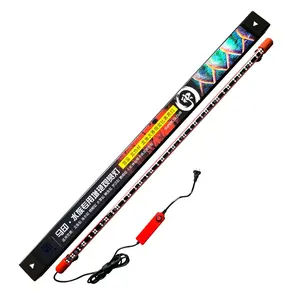Phổ biến trong ngành của bạn






4 inch100mm đĩa chà nhám linh hoạt Mài đĩa nhựa trái phiếu khô Kim Cương đánh bóng pad cho Granite đá cẩm thạch đá thạch anh
2,00 US$ - 3,50 US$
Đơn hàng tối thiểu: 100 Cái
Vận chuyển mỗi chiếc: 2,45 US$







Kim cương tay đánh bóng Pad kim cương Sanding khối 60/120/240/400 Grit bọt ủng hộ kim cương tay pad cho gạch đá cẩm thạch Granite
1,00 US$ - 3,10 US$
Đơn hàng tối thiểu: 10 Cái







Công cụ Kim Cương 100*3.0 kim cương nhựa đá Miếng đánh bóng
1,50 US$ - 4,00 US$
Đơn hàng tối thiểu: 10 Cái







Kim cương 4 inch 107x1.2mm siêu tốc độ cắt đá mài biểu tượng tùy chỉnh
0,07 US$
Đơn hàng tối thiểu: 50400 Cái







Đĩa Mài Linh Hoạt Tùy Chỉnh Miếng Nhựa Resin Đánh Bóng Bê Tông Đánh Bóng Khô Liên Kết Nhựa Miếng Đánh Bóng Kim Cương
1,20 US$ - 1,50 US$
Đơn hàng tối thiểu: 100 Cái
Vận chuyển mỗi chiếc: 0,68 US$







Mũi Khoan Kim Cương Cho Khoan Tay Khoan Tốc Độ Cao Tương Thích Với Dụng Cụ Y Tế Bán Buôn Mani
1,20 US$ - 1,50 US$
Đơn hàng tối thiểu: 100 Gói






Nha Khoa Cung Cấp Nha Khoa Đánh Bóng Sản Phẩm Kim Cương Mũi Khoan 10 Cái/hộp
0,13 US$ - 0,15 US$
Đơn hàng tối thiểu: 2000 Cái



Đĩa Đánh Bóng Vật Liệu Phòng Thí Nghiệm Nha Khoa Đĩa Kim Cương Đĩa Mài Cắt Nha Khoa Đĩa Tách Nha Khoa
0,90 US$ - 1,50 US$
Đơn hàng tối thiểu: 100 Cái





Hoàn Chỉnh Mô Hình 10 Cái/hộp Nha Khoa FG Kim Cương Mũi Khoan Kit Đôi-Hai Lớp Cát Mạ Đánh Bóng Bur Khoan Cho Tốc Độ Cao Tay Khoan
1,28 US$ - 1,98 US$
Đơn hàng tối thiểu: 10 Cái






Bệnh Viện Mới Diamond Burs Sản Phẩm Của Phòng Thí Nghiệm Nha Khoa Thiết Bị Chẩn Đoán Phẫu Thuật
0,13 US$ - 0,15 US$
Đơn hàng tối thiểu: 2000 Cái



3S Thương Hiệu Nha Khoa Diamond Burs Khoan Cho Tay Khoan Tốc Độ Cao
1,00 US$ - 1,50 US$
Đơn hàng tối thiểu: 10000 Gói






Mới Bệnh Viện Kim Cương Mũi Khoan Sản Phẩm Của Y Tế Nha Khoa Phòng Thí Nghiệm Phẫu Thuật Thiết Bị Chẩn Đoán
0,11 US$ - 0,15 US$
Đơn hàng tối thiểu: 1000 Cái
Vận chuyển mỗi chiếc: 1,53 US$
Các danh mục hàng đầu
Giới thiệu về cát kim cương bur
Alibaba.com cung cấp các sản phẩm 70 cát kim cương bur. Có rất nhiều cát kim cương bur lựa chọn dành cho bạn, chẳng hạn như thép, kim loại, và nhựa. Bạn cũng có thể chọn từ class i, class ii, và class iii cát kim cương bur. Cũng như từ điện, hướng dẫn sử dụng, và tuabin cát kim cương bur.Và bất kể cát kim cương bur là iso, ccc, hay sgs.








